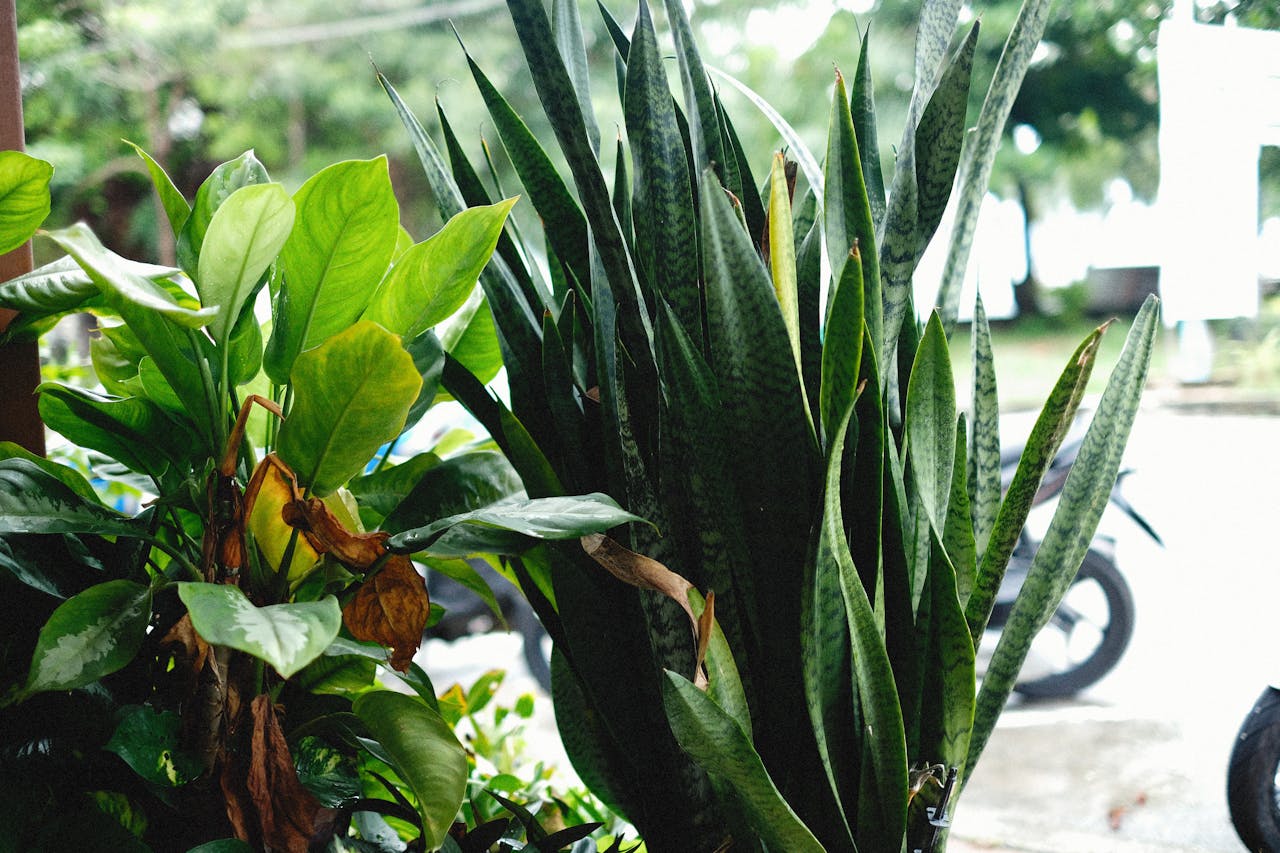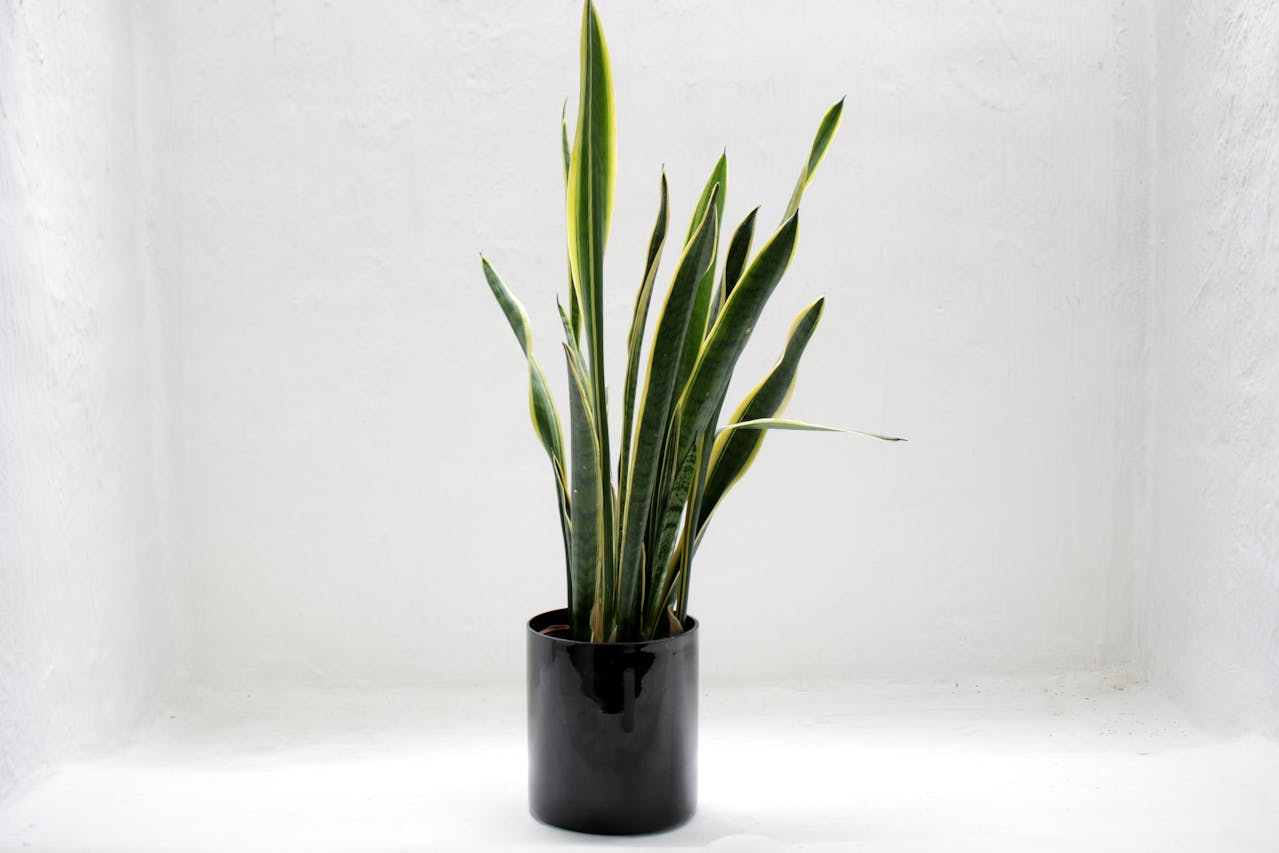
In an era where open-concept living spaces are becoming more popular, finding ways to create privacy while maintaining an aesthetically pleasing environment is a growing concern. One of the most effective and attractive solutions is to use indoor plants as natural privacy screens. Snake plants (Sansevieria), also known as Mother-in-Law’s Tongue, are an excellent choice for this purpose. With their tall, upright leaves and low-maintenance nature, snake plants can create a stylish and functional privacy screen that enhances the ambiance of any room. In this article, we’ll explore how to use snake plants to create a natural privacy screen indoors and offer tips on how to care for them to ensure they thrive.
1. Benefits of Using Snake Plants as a Privacy Screen

Before diving into the specifics of how to use snake plants for privacy, it’s important to understand why they are a great choice:
- Vertical Growth: Snake plants grow vertically, with stiff, upright leaves that can reach up to 3 to 4 feet in height. This makes them ideal for creating a tall privacy screen without taking up too much floor space.
- Low Maintenance: Snake plants are incredibly low-maintenance, requiring minimal watering and care, which makes them perfect for people with busy lifestyles or those new to indoor gardening.
- Air-Purifying Qualities: Snake plants are known for their air-purifying properties. They can remove toxins such as formaldehyde, benzene, and xylene from the air, contributing to a healthier indoor environment.
- Aesthetic Appeal: With their sleek, sword-like leaves and varying shades of green, snake plants add a modern and stylish touch to any indoor space. They blend well with different interior design styles, from minimalist to contemporary.
2. Choosing the Right Snake Plant Variety

There are several varieties of snake plants, each with its own unique characteristics. When selecting snake plants for a privacy screen, consider the following popular varieties:
- Sansevieria Trifasciata ‘Laurentii’: This is the most common variety, featuring tall, green leaves with yellow edges. It can grow up to 3-4 feet tall, making it perfect for creating a substantial privacy screen.
- Sansevieria Cylindrica: Known for its cylindrical, spear-like leaves, this variety adds a unique texture to your indoor garden. It can grow up to 6 feet tall and is great for a more dramatic privacy screen.
- Sansevieria Trifasciata ‘Zeylanica’: This variety has dark green leaves with lighter horizontal stripes. It’s similar in height to the ‘Laurentii’ and is ideal for creating a dense, lush screen.
Choosing the right variety depends on your specific needs, the amount of space you have, and your aesthetic preferences.
3. Arranging Snake Plants for Maximum Privacy

To effectively use snake plants as a privacy screen, proper arrangement is key. Here are some tips to consider when arranging your snake plants:
Spacing and Placement:
- Close Spacing: Place the snake plants close together to create a denser, more opaque screen. This is especially effective in areas where you need more privacy, such as between living spaces or near windows.
- Staggered Placement: For a more natural look, consider staggering the placement of your snake plants. This involves placing some plants slightly in front of others, creating a layered effect that enhances the density of the screen.
- Use Multiple Planters: Using several smaller planters instead of one large planter allows for greater flexibility in arranging your privacy screen. You can easily adjust the positioning of the plants to create the desired level of privacy.
Location Considerations:
- Near Windows: Snake plants thrive in bright, indirect light, making them ideal for placing near windows where they can also provide privacy from outside viewers.
- Between Spaces: Use snake plants to define different areas within an open-concept space, such as separating a dining area from a living room or a workspace from a relaxation zone.
- Entryways and Hallways: Placing snake plants in entryways or hallways can create a welcoming entrance while also adding a layer of privacy.
4. Choosing the Right Planters for Your Snake Plants

The type of planter you choose for your snake plants can enhance the overall look of your privacy screen. Consider the following factors when selecting planters:
Size and Material:
- Size: Choose planters that are proportional to the size of your snake plants. Taller planters can elevate shorter varieties to create a more uniform screen, while wider planters can accommodate multiple plants for a fuller look.
- Material: Planters made of materials such as ceramic, terracotta, or metal can add a stylish touch to your indoor space. Ensure the planters have drainage holes to prevent overwatering, which can harm snake plants.
Style and Design:
- Modern and Minimalist: For a sleek, modern look, opt for simple, monochromatic planters that complement the tall, slender leaves of the snake plant.
- Rustic and Natural: If you prefer a more natural or rustic aesthetic, consider planters made from natural materials like wood or woven baskets.
5. Caring for Snake Plants in a Privacy Screen Setup

Once your snake plants are arranged to create a natural privacy screen, it’s important to maintain them properly to ensure they stay healthy and continue to provide the desired level of privacy.
Watering and Soil:
- Watering: Snake plants prefer to dry out between waterings. Water them sparingly, about every 2-6 weeks, depending on the indoor climate and season. Overwatering can lead to root rot, which is one of the few issues snake plants may face.
- Soil: Use a well-draining potting mix, such as a cactus or succulent mix, to prevent water from sitting in the soil and causing root rot.
Light and Temperature:
- Light: Snake plants thrive in bright, indirect light but can also tolerate low light conditions. However, they may not grow as quickly in low light. Place your privacy screen near a window with filtered light for optimal growth.
- Temperature: Snake plants prefer temperatures between 60-85°F (15-29°C). Avoid placing them in areas with cold drafts or extreme temperature fluctuations.
Pruning and Maintenance:
- Pruning: Occasionally prune your snake plants to remove dead or damaged leaves. This helps maintain the plant’s appearance and encourages new growth.
- Cleaning: Dust the leaves periodically with a damp cloth to keep them looking vibrant and to allow for maximum photosynthesis.
6. Enhancing Your Privacy Screen with Additional Plants

While snake plants are excellent for creating a natural privacy screen on their own, you can enhance your indoor garden by mixing them with other low-maintenance houseplants. Consider adding plants with complementary shapes and textures, such as ZZ plants, peace lilies, or pothos, to create a more dynamic and visually appealing display.
Conclusion
Using snake plants to create a natural privacy screen indoors is an effective and stylish way to enhance your living space. Their vertical growth, low-maintenance nature, and air-purifying qualities make them ideal for busy individuals looking to add greenery and privacy to their homes. By choosing the right varieties, arranging them strategically, and providing proper care, you can create a beautiful and functional privacy screen that adds both form and function to any room. Whether you live in a small apartment or a spacious home, snake plants offer a versatile solution for indoor privacy needs.







